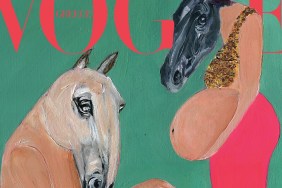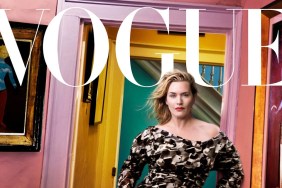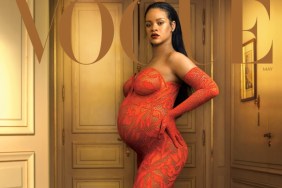Jezebel has just posted a call offering $10,000 for unretouched photos of Lena Dunham‘s Vogue cover and editorial spread:
“Lena Dunham is a woman who trumpets body positivity, who’s unabashedly feminist, who has said that her naked body is ‘a realistic expression of what it’s like to be alive’ and ‘if you are not into me, that’s your problem.’ Her body is real. She is real. And for as lovely as the Vogue pictures are, they’re probably not terribly real. So Jezebel is offering $10,000 for pre-Photoshop images from Lena’s Vogue shoot.”
The online publication notes that Vogue has a well-documented history of heavy photo manipulation and also that the prolific celebrity and fashion photographer, Annie Leibovitz — who photographed Dunham for the glossy’s February Issue — has openly admitted that she doctors images.
One could find a couple problems with this project:
1) Good luck finding a fashion publication that doesn’t retouch its images. Vogue almost certainly did use Photoshop in this instance — but also in every other instance, ever.
2) If we accept my first point, that raises the question: Why is Jezebel trolling for proof of the widely-used industry practice in this specific case?
Dunham is famously open about the fact that she doesn’t fit into a size two. (Or four, or six.) Because Vogue typically photographs very thin women, whenever a non-straight-sized body appears in the pages of the magazine, it is notable. This time, the glossy didn’t shy away from showing Dunham’s body and dressing it in beautiful, covetable clothing. It’s a pretty remarkable thing: A talented young woman, who may not be as conventionally attractive as other female celebrities, was the true star of a Vogue fashion shoot.
Isn’t it kind of shame-y and weird to suggest that she couldn’t have looked so good without a big spoonful of Photoshop sugar? Especially since everyone has their photos retouched for the pages of Vogue, even models?
Jezebel explains:
“To be very clear: Our desire to see these images pre-Photoshop is not about seeing what Dunham herself ‘really’ looks like; we can see that every Sunday night or with a cursory Google search. She’s everywhere. We already know what her body looks like. There’s nothing to shame here. Nor is this rooted in criticism of Dunham for working with Vogue. Entertainment is a business, after all, and Vogue brings a level of exposure that exceeds that of HBO.
This is about Vogue, and what Vogue decides to do with a specific woman who has very publicly stated that she’s fine just the way she is, and the world needs to get on board with that. Just how resistant is Vogue to that idea? Unaltered images will tell.”
Okay. Personally, I think this project has very little to do with feminism or making any kind of political or moral statement and everything to do with pageviews. If Jezebel gets its hands on undoctored images, no matter how unremarkable they are, it’ll be a huge traffic coup. The publication established its reputation using this exact technique in 2007, when it published a disturbing before/after Photoshop cover with Faith Hill for Redbook; the photograph was acquired following an open call asking readers to submit the most shocking example of Photoshop retouching by a women’s magazine. A reward was offered for $10,000.
This is not unusual practice. Another Gawker Media site, Gizmodo, reportedly paid $5,000 for an iPhone prototype in 2010. Gawker was said to have tried a similar tactic with someone connected to the Balloon Boy story, to prove that it was a hoax. Other publications, like TMZ and the National Enquirer, are known to pay sources regularly. Even a more traditional news outlet, CBS, reportedly agreed to pay Casey Anthony $200,000 for materials to use for broadcast.
The unifying characteristics of all of these stories? They are pretty trashy, they aren’t about anything — but they do attract a lot of attention. And that’s worth money.
Related:
- Lena Dunham for Vogue: Burberry, Prada, Rochas, Alexander McQueen, Dolce & Gabbana, Celine
- Trolling for Pageviews: Blogger Admits She Fabricated Rumor About Alexander Skarsgård and Meryl Streep
- More Proof That Miranda Kerr Photoshops Her Instagram Pictures?
- Jennifer Lawrence Has Bones Shifted in Flare Photoshopping Shocker








